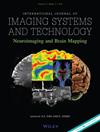OPFSS: A Few-Shot Medical Image Segmentation Algorithm Based on Optimized Pseudo-Annotations and Self-Attention
Abstract
Deep learning has demonstrated excellent capabilities in the field of medical image segmentation, but its practical application is limited by insufficient labels. In this paper, we propose a semi-supervised training method to achieve few-shot medical segmentation through an innovative and optimized pseudo-annotation strategy. We generate pseudo annotations through the fusion scheme of the Felzenszwalb algorithm and a small convolutional neural network: the Felzenszwalb algorithm completes the preliminary region division based on regional features, and the convolutional neural network optimizes the annotation area with its powerful feature extraction ability. The synergy of the two methods not only avoids the limitation of traditional model iterative labeling that is easy to fall into local optima, but also makes up for the defect of insufficient feature representation of simple graph theory methods. In addition, a self-attention mechanism and automatic enhancement techniques are introduced into the prototype network to make full use of the context and texture information in annotated images. The experimental results show that OPFSS achieves a Dice score of 78.77% on the CHAOS dataset and 72.19% on the Synapse dataset on two publicly available medical image datasets, demonstrating the effectiveness and superiority of the approach.

 求助内容:
求助内容: 应助结果提醒方式:
应助结果提醒方式:


